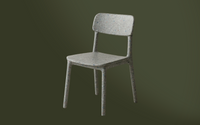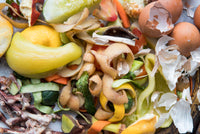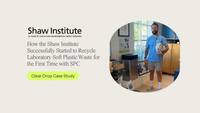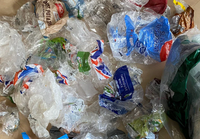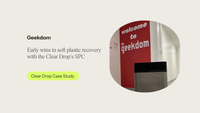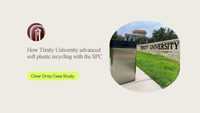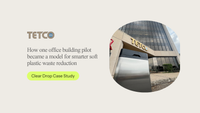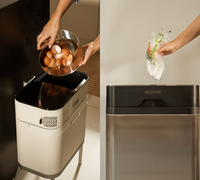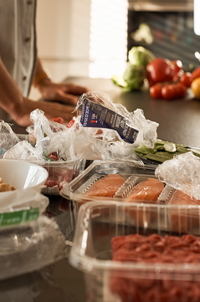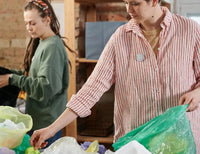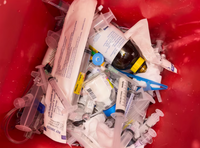Flexible plastic waste is one of the most persistent challenges on college campuses. From snack wrappers to shipping film used in media facilities, most soft plastics end up in landfills. Trinity University partnered with Clear Drop to pilot the Soft Plastic Compactor (SPC) inside the Richardson Communications Center — a space connecting academics, student media, and public programming — to test how a simple visibility shift could spark real sustainability participation.
Trinity University, a nationally ranked liberal arts institution in San Antonio, Texas, enrolls approximately 2,600 students and maintains a student-to-faculty ratio of roughly 8:1. The university is known for its academic rigor, outstanding alumni outcomes, and architecturally significant campus. Trinity consistently ranks among the top liberal arts colleges in the country and holds the distinction of being the number one liberal arts university in Texas.
Within the Dorothy A. and James W. Laurie Auditorium complex lies the Richardson Communications Center, home to the university’s Department of Communication and KRTU-FM (Jazz 91.7). KRTU is a premier jazz and alternative radio station serving the greater Southwest — a campus and community hub where media production, learning, and cultural programming intersect.

Laurie Auditorium itself is a 2,700-seat venue that hosts a wide range of events, from academic lectures and commencement ceremonies to public performances, community discussions, and special guest visits. Its high visibility and diverse audience made it an ideal site to explore a new sustainability initiative.
Project goals
The goal of this pilot was to understand how the SPC performs in a high-traffic environment that brings together:
- Students in media and communication programs
- Faculty and staff working daily in shared spaces
- KRTU-FM hosts, volunteers, and production teams
- Visitors and community members attending events
- Guest speakers and partners engaged in cultural programming
This allowed Trinity to evaluate not only the waste reduction impact but also communication strategies that make sustainability efforts feel accessible and rewarding.
Soft Plastic Compactor solution
The SPC was installed in the Communication Department break room — a location integrated into daily student and staff routines within the Laurie Auditorium complex. Clear, friendly instructions helped everyone quickly understand what types of plastics belong in the device and why this matters for recycling outcomes.

Instead of soft plastics piling up in bins or heading to landfill, the SPC turned them into compact blocks ready for recycling through Clear Drop’s partner network. The device became a conversation starter, reinforcing that taking part in sustainability can be practical, fast, and even satisfying.
“Seeing wrappers and film compact in seconds is cathartic — it normalizes sustainable behavior.” — Dr. Althea Delwiche, Professor & Dept. Chair
SPC use case
Primary location
Shared Communication Department break room within the Laurie Auditorium complex.
Key user groups
- Communication faculty and administrative staff
- Students and student media workers
- KRTU DJs, station employees, and volunteers
- Event guests and visiting speakers
Common soft plastic inputs
- Snack wrappers and drink packaging
- Film wrap from studio and tech deliveries
- Mailers and protective packaging for radio operations
- Plastics from hospitality support for events
This variety of inputs revealed the types of soft plastic generated in an interdisciplinary learning and production environment, while also showing how easily different user groups could adopt the SPC as part of their daily routines.
Early outcomes
- Increased awareness of soft plastic recycling among students and staff
- Higher engagement from users who had never recycled soft plastics before
- More visible sustainability action in a shared, high-traffic space
- Successful testing of messaging and signage formats for wider roll-out
The pilot showed how placing the SPC where people naturally interact — not hidden behind facility doors — drives adoption from day one.
Findings and new collaboration perspectives
This pilot demonstrated that the SPC can thrive in educational environments where media production, learning, and public interaction overlap. Trinity University continues evaluating broader expansion across campus departments.
Clear Drop is exploring additional installations to support sustainability goals tied to student engagement, waste reduction, and campus innovation. Colleges play a key role in shaping habits that last a lifetime. By making soft plastic recycling easy and visible, Trinity is helping build those habits now — right at the source of waste generation.
Bring Soft Plastic Recycling to Your Campus
Clear Drop® partners with universities to reduce flexible plastic waste in student and staff spaces with measurable results.
Contact our team to start a pilot at your campus:
https://onecleardrop.com/pages/for-business

